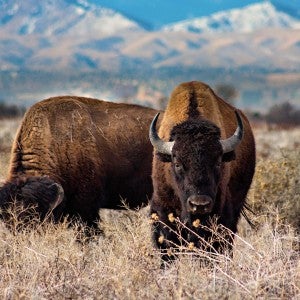The chance to see wild animals draws millions of people outdoors each year. While spotting wildlife in nature is certainly exciting, it’s important not to lose sight of the negative impact we can have on animals, especially when we enter their habitats.
Follow these tips on how to responsibly watch wild animals.
Why we should give wild animals their space
People can impact wildlife in nature without even knowing it. Our presence can cause them to flee an overcrowded area, leaving their young behind vulnerable to the elements and predators, or they may spend less time performing vital behaviors such as foraging, mating, resting and nursing.
Human activities can be especially disruptive when animals are mating, establishing a nest or raising their young. Some animals become more nocturnal to avoid humans or abandon highly visited habitat altogether.
When people repeatedly approach wildlife, the animals could also lose their natural fear of humans through a process called habituation. And when humans feed animals or leave food at campsites or on the trail, animals can learn to associate humans with positive rewards. These food-conditioned animals may begin approaching visitors as well as roadways and parking lots where they risk getting hit by cars.
When wild animals approach visitors, it can be tempting to get close to them, pet them, feed them or snap a photo with them. But it’s important to remember that these animals are still inherently wild. They pose a risk to visitors just as visitors pose a risk to them.
Park managers sometimes use hazing methods to try to teach wild animals to fear humans again, but if they are unsuccessful park managers may turn to euthanasia. Unnatural foods can also lead to poor nutrition and even damage animals’ internal organs, or they might accidentally ingest plastic and other debris.

Large mammals may alter their behavior when humans get within a half mile of them.

In 2022, the National Park Service received 312 million recreation visits.

Bison cause more injuries to visitors at Yellowstone National Park than any other animal.
Tips to reduce your impact on wild animals
- Research species you might encounter so you know what to expect.
- Look up and follow park regulations on distances to keep from wildlife—they can vary between parks.
- Know what gear you need to keep yourself and wildlife safe, e.g. bear spray, bear canisters, etc.
- When walking your dog on trails where they’re allowed, keep them leashed so they don’t disturb wild animals—and always pick up after your pup.
- Do not leave any food or garbage behind for wild animals to find (yes, even food scraps such as apple cores and banana peels).
- When in doubt, err on the side of caution and give animals more space.
- Ask a park ranger if you have questions.
You can also participate in a Humane Journey! These trips trips offer authentic mission-based travel opportunities to unique destinations throughout the world while witnessing firsthand the meaningful work of the Humane Society of the United States and Humane Society International.

